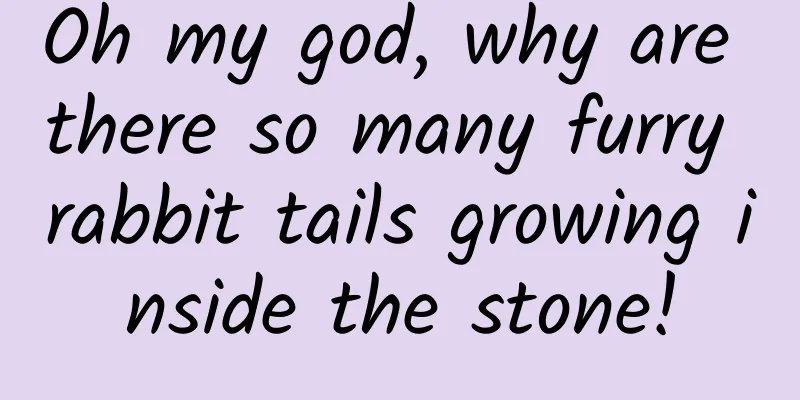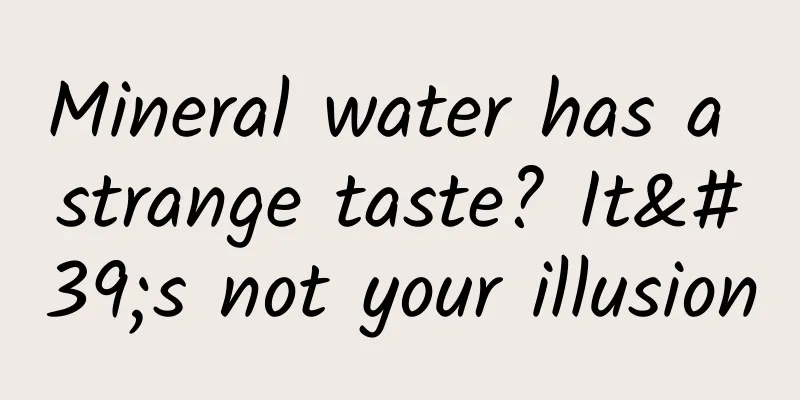Oh my god, why are there so many furry rabbit tails growing inside the stone!

|
Happy days always pass by in a flash, and the Spring Festival holiday of the Year of the Rabbit is coming to an end in the blink of an eye! On the last day of the holiday, let's take a look at a cute mineral - fibrous calcium silicate . Because it looks like a rabbit's tail, it is also nicknamed " Rabbit Tail Stone ". I hope the furry Rabbit Tail Stone can heal the workers who are about to return to work. For every calcite produced, one rabbit is killed (false | GorissM / Wikimedia Commons Cute calcite growing in rock cavities | Robert M. Lavinsky / Wikimedia Commons Where does the name come from? Okenite was first named in 1828, when it was called Ockenit in honor of the German naturalist Lorenz Oken (1779-1851). Ocken's real name was Lorenz Ockenfuß. He shortened his surname to the form we see today only after he taught at the University of Göttingen. Later, Ocken taught at prestigious universities such as the University of Munich and the University of Zurich, and was an important member of the school of natural philosophers. Although Okun made important contributions in discovering that cells are the components of organisms and promoting the progress of animal evolution, his reasoning generally lacks evidence support and his views are quite mysterious and incomprehensible. Portrait of Okun | Roux/Wikimedia Commons How was the Rabbit Tail Stone formed? Back to hydrated calcium silicate, as the name suggests, its composition naturally includes silicon, calcium and water. In fact, their composition is indeed hydrated calcium silicate : Putting aside these incomprehensible microscopic structures, calcite has a Mohs hardness of 4½ - 5, is transparent to translucent, has a glassy to pearly luster, and is white, or slightly yellowish in color. Fibrous hydrocalcite is a trigonal crystal system (the same as that of crystal), and occasionally forms blade-like or even lath-like crystals, but in most cases, they exist in the form of fibrous crystal clusters . The fine fibers are clustered together and are white, which really looks like a rabbit's tail (if you look closely, you will find that good okenite is slightly more transparent and shiny) | mindat.org/Kantor BZ Fluffy and bouncy! There are actually many such furry and cute crystal balls in nature, but calcite is the most famous among them (not sure whether to add one, anyway it is very famous). This is determined by its important physical property - although the crystals of calcite are thin and weak, they are not brittle and are elastic ! Yes, mineral crystals can also be elastic. A familiar example is mica flakes, which some of you may have played with. Those who haven’t seen it can also feel it through the following picture: Yes, bouncy and fun! | cochise.edu There are also various kinds of asbestos, etc., so I won’t give more examples. But the more important thing is that because the hairy fibrous calcium silicate is elastic and will not prick your hands, it: You can touch it! You can touch it! You can touch it! This is a unique case in the Maomao Mine . Although I still feel sorry for the mine, I have never touched it. Finally, I have to say something very ridiculous: since most of the calcite grows in the holes of basalt in India, and the matrix of the holes is often white , these rabbit tail balls do not look particularly obvious. Therefore, some machine-made miners would carefully inject dyes into these balls with syringes , dyeing them into various colors - mostly yellow and blue-green : Some of them have good visual effects, deceived many people and made a lot of money | mineral-forum.com/Fabre J I don't know how to comment on this, but when merchants say with confidence that "the color is guaranteed to be natural", everyone should be careful not to be deceived. Furry minerals and them In addition to cynotrichite, there are many other "hair balls" in the mineral world. For example, cynotrichite , which is bright blue, looks like it has longer "hair", but compared with cynotrichite, cynotrichite's "hair" is much smaller: Small copper ore | Chinellato Matteo / Chinellatophoto There is also the green copper-containing mineral Malachite that has turned into a "hair ball": After turning into a "hair ball", Malachite looks like this | Giovanni Golinelli / mindat.org Brochanite is very similar to malachite : “Hairball” water gallstones | Stephan Wolfsried / mindat.org There is also Atacamite . After it grows into a "hair ball", it is more prickly and "introverted" than the original crystal, but it is still a "hair ball" from a distance: Chlorotachite grows into a "hairy ball" | Knut Eldjarn / mindat.org In addition, there are some minerals that can grow into "hair balls", and they are naturally colorful. For example , Erythrite , its crystal color is very dark, but when it grows into a "hair ball", it will be pink: Cobalt flower grows into a "hair ball" | Enrico Bonacina / mindat.org Cuprite var. Chalcotrichite looks a bit "sloppy ": Copper cuprite is redder, but it doesn't grow radioactively, it just turns into a messy mess of fur. | Peter Haas / mindat.org And the cacoxenite with relatively regular appearance. In contrast to cuprite, the "hair balls" of pyrite are very regular | Christian Rewitzer / mindat.org But please note that not all "hairy" minerals are as elastic as fibrous calcium silicate, so they appear very fragile in human hands and cannot withstand your strong rubbing! Author: Old Cat This article comes from the Species Calendar, welcome to forward If you need to reprint, please contact [email protected] |
>>: On the seventh day of the Lunar New Year, good luck in starting work!
Recommend
Kuaishou operation skills: How to package your own Kuaishou account?
Nowadays, short video software has covered our li...
Inference is completed in less than 1ms on iPhone 12, Apple proposes MobileOne, an efficient mobile backbone network
Efficient neural network backbones for mobile dev...
My first experience with advertising embedded in the body of a public account. What is the promotion effect?
Some time ago, my official account was fortunate ...
Ancestors or brothers? A third possibility of evolution hidden in human genes
Produced by: Science Popularization China Author:...
iOS users are so lucky, WeChat has launched a new feature, Android users can only stare blankly
From the introduction of the WeChat update, we ca...
Why do urine tests require “midstream urine”? Will the front and back urine affect the results?
Review expert: Cao Qingwei, deputy chief physicia...
NVIDIA launches Battlebox 4K gaming PC console
The only market that is still growing in the enti...
2019 Advertising Monetization Insights Report (Part 1)
As 2020 approaches, many media have begun plannin...
How much does a mask production equipment cost? Can you make money by producing disposable masks?
The most popular item on the market recently is m...
25 Marketing Operation Experiences That Will Keep Opening Your Mind (Part 1)
There is no standardized perfect solution for mar...
2022 Chengdu Tea Tasting Private WeChat Good Places for Drinking Tea
Private WeChat appointment arrangements for Cheng...
Why do humans love kissing? This may be the scientific explanation for the "love brain"...
When we are immersed in the romantic moment of ki...
19 best mobile development tools in Chinese with detailed explanations and download addresses
These days, just about every developer is familia...
As the college entrance examination approaches, nutrition experts recommend the "7+1" brain-boosting method
As the college entrance examination approaches, m...
How does Google manage 2 billion lines of code?
When faced with the question "How big is Goo...









